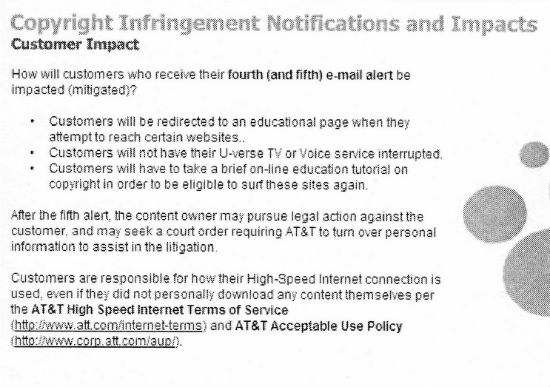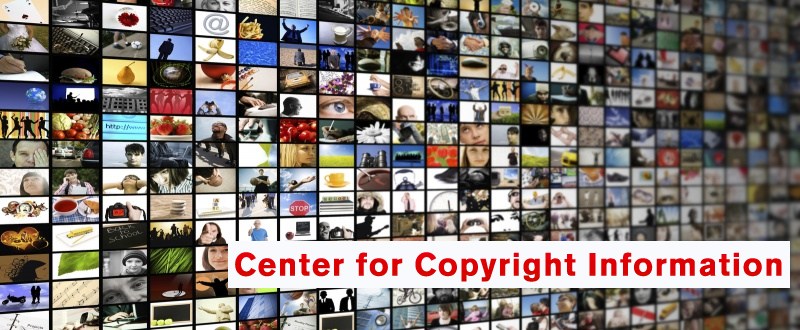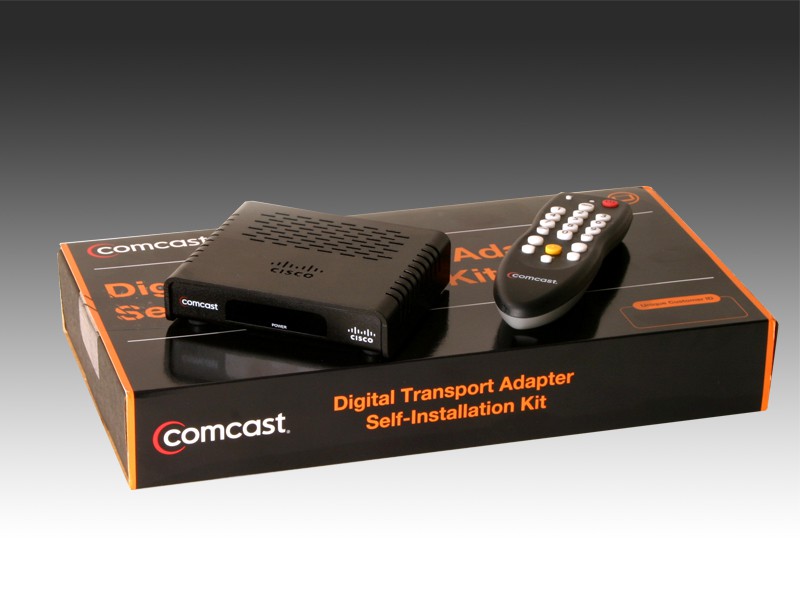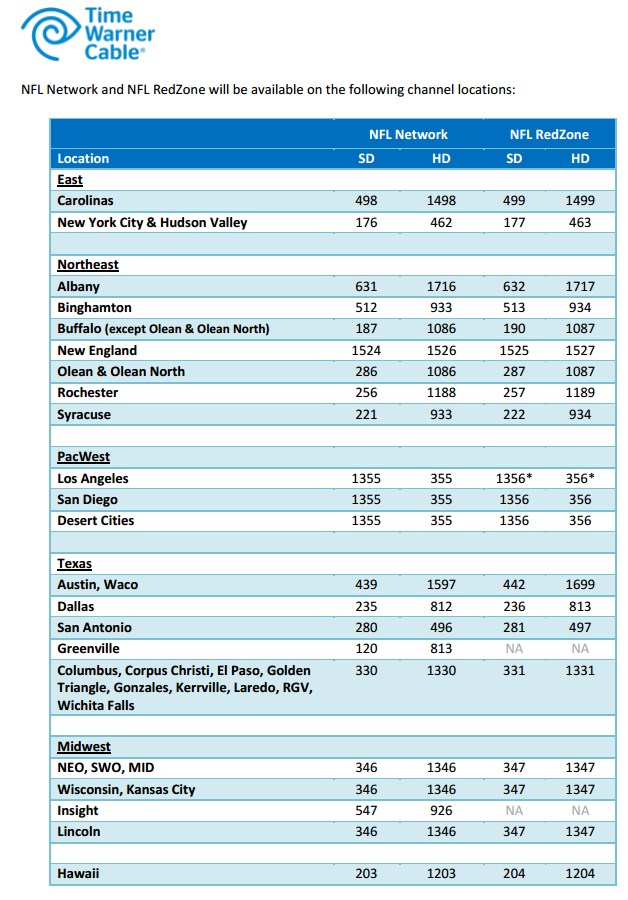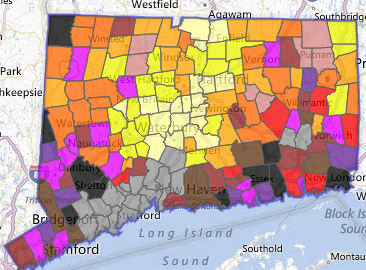
The darker the color, the higher percentage of CP&L customers without electric service. Areas in gray are served by other electric utilities.
Although less hard-hit than New Jersey, Connecticut residents will wait almost as long as customers further south for restoration of electric service, with AT&T getting its own services back up and running only after electric utility repair crews finish work.
Customers across the state are experiencing power outages that range from a handful of homes to near-complete blackouts that utility companies predict will take at least a week to repair. For a second day, AT&T continued to leave its customers in the dark, with nothing more than a general statement it continued to “assess the damage” to its wired and wireless networks that “have issues” across Connecticut.
In fact, AT&T’s most visible effort for Connecticut customers waiting for service is a website promotion asking for $10 donations for the American Red Cross, conveniently billed to your AT&T account.
“Why did I expect anything more from AT&T when they never seem to be terribly interested in customer service generally,” complains Stop the Cap! reader Bethany Johnson, also a U-verse customer e-mailing us from a friend’s phone on Verizon Wireless. “AT&T customer service won’t say anything to us and you can’t find a thing on their website with the same old statements on the news.”
Johnson says Connecticut Light & Power (CL&P) restored her electric service early this morning, but U-verse is out and her AT&T cell phone no longer has any signal from her home.
“When you call AT&T, one of their call centers answers and they just read out some statement that tells you nothing,” she says. “Verizon Wireless and Cablevision are falling all over each other trying to give us updates, but AT&T can’t be bothered.”
Johnson says her friends with Verizon Wireless seem to have weathered Hurricane Sandy better than she did, with much more sporadic AT&T cell service afflicting customers across Connecticut.
 “My husband drives for a living and he says AT&T’s cell network as of today along the roads he travels really took a beating and he often can’t get in touch with me,” Johnson said. “AT&T says they have ‘issues’ in Connecticut and I am getting to the point where I am having an issue with them. Just tell us what is going on, we can take it.”
“My husband drives for a living and he says AT&T’s cell network as of today along the roads he travels really took a beating and he often can’t get in touch with me,” Johnson said. “AT&T says they have ‘issues’ in Connecticut and I am getting to the point where I am having an issue with them. Just tell us what is going on, we can take it.”
United Illuminating is reporting 137,983 customers without power; more than 43 percent of its service area. Nearly all of UI’s customers in the Southport section of Fairfield have no electric service, followed by Weston at 90 percent, Trumbull with nearly 85 percent, Monroe at nearly 82 percent and Bridgeport at 71 percent.
CL&P is reporting 351,910 or about 28 percent of its customers without power. In southwestern Connecticut, more than half of CL&P’s customers are in the dark in Darien, Greenwich, New Canaan, Westport, Wilton, Weston, Newtown, Monroe and Danbury.


 Subscribe
Subscribe


